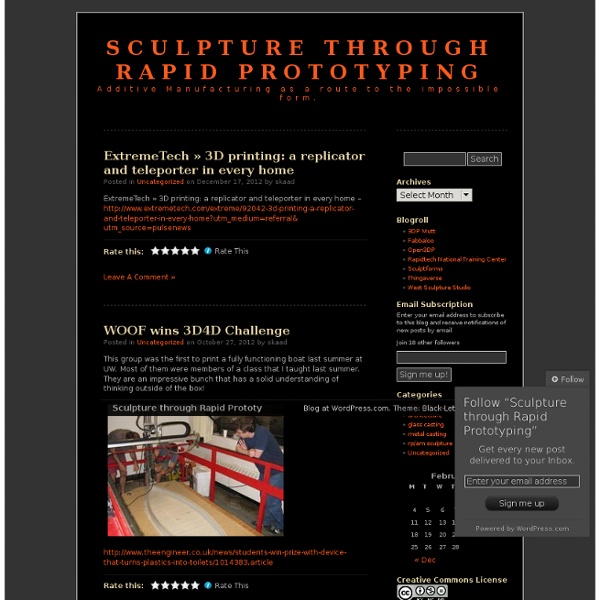



Digital Fabrication at Alfred High-end 3D printer art - Boing Boing 3D printers are great for complex engineering projects, but what happens when you try to get creative with it? Most artists obsessed with digital fabrication opt for milling machines or laser etching–which are cheaper and easier to access–but some have stuck with rapid prototyping (aka rapid manufacturing) because building ultra-precise objects out of nothing is undeniably awesome. Can you imagine if Torolf Sauermann tried to make this snail shell-esque math art using a pottery kiln? NY art collective Commonwealth made the body of this mask with light-sensitive plastic in a stereo lithographic printer and then spent 20 hours attaching strands of pony hair to it. Designer Janne Kyttanen made this iPod shoulder bag using laser sintered polyamide. New York native Roxy Paine makes cool machines like automatic sculpture maker called the SCUMAK, which spits out randomly-shaped red-pigmented plastic blobs onto a conveyor belt at random intervals. Photo: Brad Estes
A RepRap Breeding Program Thingiverse - Digital Designs for Physical Objects not_available Affordable Options: Ceramics Meets 3D Printing by Desktop Engineering Making do with less has become a recurrent theme that has surfaced as a result of the global economy. Yet University of Washington (UW) mechanical engineering professor and longtime practitioner of 3D printing, Mark Ganter, has been addressing the high cost of commercial materials and experimenting with his own material formulas for some time now. Five years ago, with the help of his graduate students, he developed a home brewed material, using a mix of artists’ ceramic powder blended with sugar and maltodextrin, a food additive. For the past 15 years, Ganter has taught an engineering course that introduces students to rapid prototyping, attracting not only engineering students but those from art and architecture as well. "When powders are $30 a pound, I can't let students try something new or experimental," Ganter said. The research was spurred by cost realities: lab fees are high and somewhat intractable, but materials can be made more cheaply.